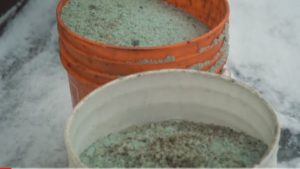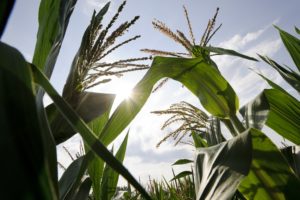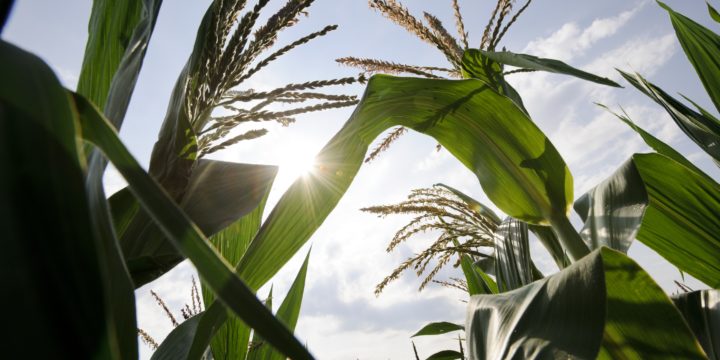The University of Wisconsin Water Resources Institute (WRI) has been functioning in the state for 57 years. Despite that half-a-century-plus track record of scientific investigations, there are still many water challenges and opportunities that bear probing.
The newest round of investigations recently launched, with four new WRI-funded projects looking into bacterial transport, the effect of salt use on southeastern Wisconsin waters, the depth of water sources in the Central Sands Region of the state and a possible method to reduce nitrates from getting into groundwater.
Chris Zahasky, professor of geoscience at the University of Wisconsin-Madison, is leading the bacterial transport project. He said, “I am really excited for this project because it will give us a chance to explore fundamental scientific questions that will improve our understanding of bacteria transport and fate from surface sources to groundwater drinking supplies.”

He continued, “We hope to discover how spatial complexity of geologic systems combined with transient system changes impacts bacteria mobility in the subsurface.”
Zahasky and his co-investigators from the Madison campus, geoscience professor Eric Roden and graduate student Vy Le, will use a novel medical imaging technique that can capture three-dimensional and time lapse observations of E. coli moving throughout different types of geologic media and soils overlying Wisconsin groundwater aquifers. The study will add geologic heterogeneity and fluid saturation levels when considering groundwater bacterial contamination under realistic environmental conditions. That means a better understanding of the dynamic process of bacterial movement into drinking water supplies, which can sicken people and livestock. The researchers hypothesize that bacteria can flow even greater distances from the source than expected and documented in prior studies.
Details on the other three new projects are:
UW-Milwaukee’s Charles Paradis, assistant professor in geosciences, in collaboration with Laura Herrick, Southeast Wisconsin Regional Planning Commission; Cheryl Nenn, Milwaukee Riverkeeper; and Timothy Wahl, UW-Milwaukee, will undertake the project titled, “Mass discharge of road salt via groundwater to surface waters in southeastern Wisconsin.” The team will try to solve the mystery surrounding high summer concentrations of chloride—possibly from road salt applications in snowy Decembers, Januarys and Februarys—in the Root River of southeastern Wisconsin. Because chloride dissolves from road salt and is highly mobile in runoff, surface water and groundwater, some have suggested the high levels in warm months comes from laden groundwater. Researchers will check chloride in groundwater feeding the river before, during and after the summer.

“Data-driven groundwater depth and risk forecasting in the Central Sands Region of Wisconsin for sustainable management.” is the second project based on the UW-Madison campus and will be led by Jingyi Huang, assistant professor in the Department of Soil Sciences, and Ankur Desai, professor of atmospheric and oceanic sciences. Relying on data, this pair will look to the past and forecast the future of water quantity and quality in an area of the state that has seen vulnerabilities in its groundwater. The project will assess factors like precipitation, temperature, evapotranspiration, soil moisture, land cover and crop varieties combined with groundwater withdrawal, irrigation and depth data. The number crunching will yield, the researchers say, a forecast of groundwater depth and nitrate health risk for 2021 to 2050.
The project, “Assessment of biochar application to reduce nitrate leaching through agricultural vegetative treatment areas,” is being led by UW-Platteville’s assistant professor Joseph Sandford in the Department of Agriculture. Biochar is a form of charcoal created from biomass and in the absence of oxygen. In this study, its use will be measured to reduce the effects of nitrates in groundwater, specifically, runoff from silage bunkers. The project will compare differences between applying corn stover, spoiled silage or hardwood biochar; evaluate the leaching difference between biochar products produced under varied temperatures; assess the impact of biochar application rates; and evaluate the effects of shallow or deep biochar tillage.

In addition to the new projects, these started last year will continue:
- Investigating in-season cover crops for reducing nitrate loss to groundwater below potatoes
- Valuing groundwater quality: A cost function analysis of Wisconsin water utilities
- Investigating sources of salinity associated with radium and strontium in the Cambrian-Ordovician aquifer system of eastern Wisconsin
Details on the ongoing projects can be found on the WRI website.




